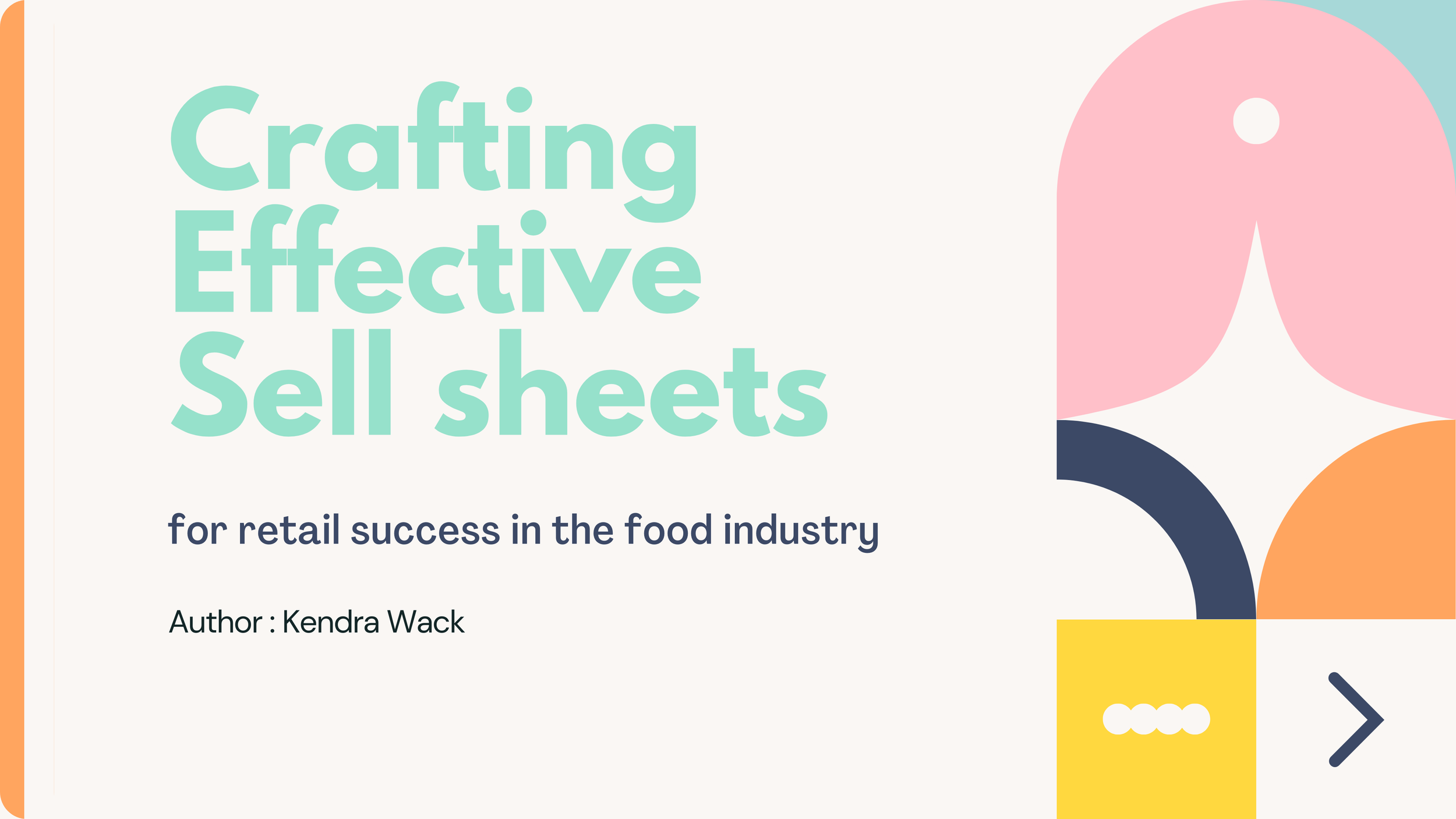Crafting Effective Sell Sheets for Retail Success in the Food Industry
In the dynamic and competitive world of the food industry, having an exceptional product is just the beginning. To thrive in the retail sector, food entrepreneurs must also master the art of presentation and persuasion. One crucial tool in their arsenal is the "sell sheet." In this article, we will delve into the nuances of creating sell sheets tailored to the food sector. Whether you are a seasoned entrepreneur or just starting out, this guide will equip you with the knowledge you need to stand out on the retail shelf.
Understanding the Essence of a Sell Sheet
Before we dive into the nitty-gritty details, let's establish what a sell sheet is. A sell sheet is a concise, one-page document that acts as a visual pitch for your food product. Its primary purpose is to grab the attention of potential retail buyers and persuade them to carry your product in their stores. Think of it as a snapshot of your brand and product that should be informative, visually appealing, and persuasive.
The Anatomy of an Effective Sell Sheet
Eye-catching Design: First impressions matter, and your sell sheet's design is the gateway to capturing attention. Use high-quality images of your product, a clean layout, and your brand colors to create an aesthetically pleasing sheet. Keep it simple, but visually appealing.
Compelling Headline: At the top of your sell sheet, include a catchy headline that encapsulates the essence of your product. It should be concise and convey the unique selling proposition of your food item.
Product Imagery: Visual appeal is paramount. Include high-resolution images of your product from various angles. Showcase its packaging, ingredients, and, if applicable, how it looks when prepared and served.
Product Information: Provide a brief but comprehensive description of your product. Include its name, flavor variants, key ingredients, and any relevant certifications (e.g., organic, gluten-free). Highlight what sets your product apart from the competition, whether it's a unique recipe, sourcing practices, or a compelling brand story.
Pricing and Packaging: Clearly outline the pricing structure for retailers and the packaging options available. Make it easy for potential buyers to understand the cost and potential profit margin.
Distribution and Availability: Specify where your product is currently available and your distribution channels. Retailers need to know how they can access your product.
Testimonials and Awards: If your product has received positive feedback or won awards, don't be shy about sharing it. Include short testimonials or awards logos to build credibility.
Contact Information: Ensure your contact information is readily accessible. Include your company's name, website, phone number, and an email address for inquiries.
Tips for Creating an Effective Sell Sheet
Know Your Target Audience: Tailor your sell sheet to the specific needs and preferences of the retail buyers you are targeting. Research their requirements and preferences in advance.
Keep it Concise: Retail buyers are busy professionals. Keep your sell sheet concise and to the point. Avoid lengthy paragraphs and jargon.
Highlight Benefits: Emphasize the benefits of your product. How will it help the retailer attract customers and generate sales?
Professional Editing: Ensure your sell sheet is free from spelling and grammatical errors. It should exude professionalism in every aspect.
Consistency with Branding: Your sell sheet should align with your brand's identity, using consistent fonts, colors, and messaging.
Update Regularly: Keep your sell sheet up to date with the latest product information, pricing, and availability. Outdated information can be a deal-breaker.
Test and Iterate: Don't hesitate to test different versions of your sell sheet with retailers and gather feedback. Use this input to refine your document over time.
In the food industry, the ability to convey the appeal and value of your product on a single page can make or break a retail deal. A well-crafted sell sheet not only showcases your product but also demonstrates your professionalism and commitment to success. So, invest time and effort into creating a sell sheet that leaves a lasting impression on retail buyers. Remember, it's not just about what's inside the package; it's also about how you present it on the outside.
Stay hungry FEAD fam!
- Kendra



